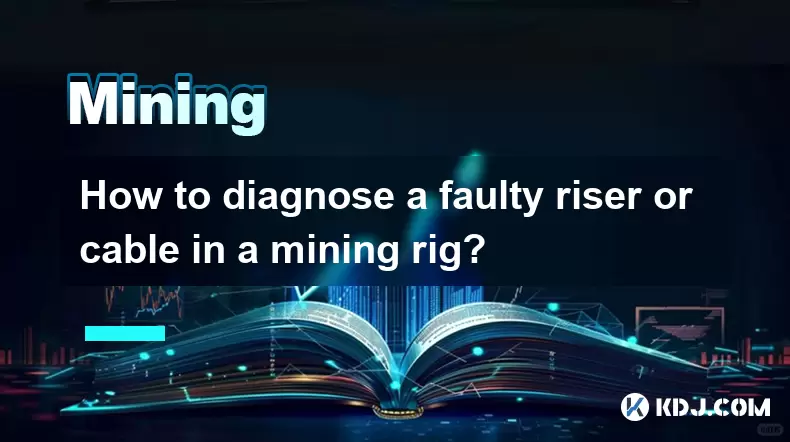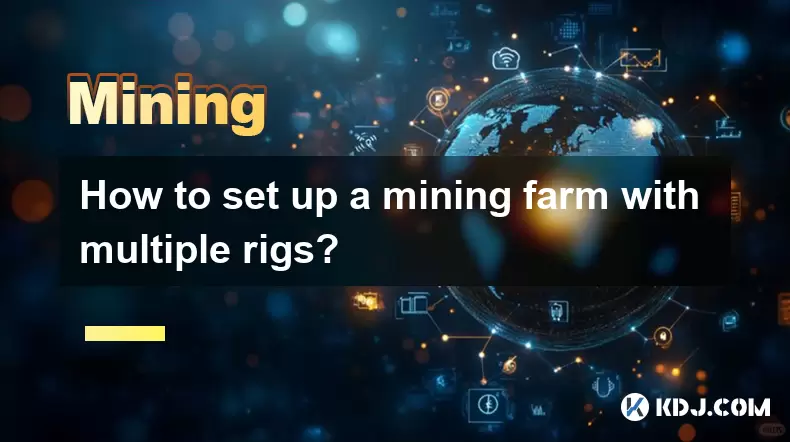-
 Bitcoin
Bitcoin $114200
0.00% -
 Ethereum
Ethereum $3637
0.56% -
 XRP
XRP $2.950
-2.01% -
 Tether USDt
Tether USDt $0.9999
0.02% -
 BNB
BNB $761.0
0.55% -
 Solana
Solana $164.1
-1.38% -
 USDC
USDC $0.9999
0.02% -
 TRON
TRON $0.3332
0.36% -
 Dogecoin
Dogecoin $0.2012
-0.52% -
 Cardano
Cardano $0.7261
-1.41% -
 Hyperliquid
Hyperliquid $37.62
-2.13% -
 Stellar
Stellar $0.3930
-2.65% -
 Sui
Sui $3.441
-0.16% -
 Bitcoin Cash
Bitcoin Cash $563.8
0.70% -
 Chainlink
Chainlink $16.50
0.09% -
 Hedera
Hedera $0.2424
-0.14% -
 Ethena USDe
Ethena USDe $1.001
0.01% -
 Avalanche
Avalanche $22.20
0.00% -
 Litecoin
Litecoin $118.0
-2.48% -
 UNUS SED LEO
UNUS SED LEO $8.991
0.12% -
 Toncoin
Toncoin $3.195
-3.87% -
 Shiba Inu
Shiba Inu $0.00001217
0.12% -
 Uniswap
Uniswap $9.674
-0.21% -
 Polkadot
Polkadot $3.633
1.00% -
 Monero
Monero $295.3
-0.82% -
 Dai
Dai $0.9999
0.00% -
 Bitget Token
Bitget Token $4.321
-0.41% -
 Cronos
Cronos $0.1392
0.73% -
 Pepe
Pepe $0.00001027
-0.89% -
 Aave
Aave $258.5
0.32%
Can you mine cryptocurrency using solar power?
Solar power can make cryptocurrency mining sustainable by cutting electricity costs and reducing carbon emissions, especially when paired with battery storage for 24/7 operation.
Aug 07, 2025 at 12:00 am

Understanding the Basics of Cryptocurrency Mining
Cryptocurrency mining involves validating transactions on a blockchain network by solving complex cryptographic puzzles using computational power. Miners use specialized hardware such as ASICs (Application-Specific Integrated Circuits) or GPU (Graphics Processing Unit) rigs to perform these calculations. In return for their work, miners receive cryptocurrency rewards, typically in the form of newly minted coins or transaction fees. The process is energy-intensive, as the hardware must run continuously to remain competitive. This high energy demand raises concerns about sustainability and electricity costs, especially in regions where power is expensive or generated from non-renewable sources.
How Solar Power Can Support Mining Operations
Solar power offers a renewable and sustainable alternative to traditional grid electricity for powering mining setups. By installing photovoltaic (PV) solar panels, individuals and mining farms can generate their own electricity directly from sunlight. The key advantage lies in the ability to reduce or eliminate electricity bills, which are one of the largest ongoing costs in mining. A properly sized solar system can supply enough power to run mining rigs 24/7, especially when combined with battery storage solutions like lithium-ion or lead-acid batteries to store excess energy produced during daylight hours.
- Solar panels convert sunlight into direct current (DC) electricity
- An inverter transforms DC into alternating current (AC), which most mining hardware requires
- Charge controllers regulate the flow of electricity from panels to batteries, preventing overcharging
- Battery banks store surplus energy for use during nighttime or cloudy days
This setup allows mining operations to function off-grid or in hybrid mode, drawing from the grid only when solar reserves are insufficient.
Calculating Energy Requirements for Solar-Powered Mining
To determine whether solar power can sustainably support mining, you must calculate the total energy consumption of your mining hardware and match it with solar generation capacity. Begin by identifying the wattage of each mining device—for example, an Antminer S19 Pro consumes approximately 3250 watts. Multiply this by the number of units and the number of hours they run daily to get total daily watt-hours.
- List all mining devices and their power draw in watts
- Multiply each device’s wattage by hours of operation per day
- Sum the total daily energy consumption in kilowatt-hours (kWh)
- Determine average daily sunlight hours in your region (e.g., 4–6 hours in most sunny areas)
- Divide total daily kWh by sunlight hours to find required solar panel output
For instance, if your mining rig uses 8 kWh per day and you receive 5 peak sunlight hours, you need a 1.6 kW solar array. Include a 20–30% buffer for inefficiencies due to weather, panel angle, and dust.
Setting Up a Solar-Powered Mining Rig: Step-by-Step Guide
Creating a functional solar-powered mining system requires careful planning and integration of components.
- Assess your mining hardware’s power needs and choose energy-efficient models to minimize load
- Purchase solar panels with sufficient combined wattage based on your energy calculations
- Install a charge controller compatible with your panel and battery voltage (e.g., MPPT controllers are more efficient than PWM)
- Connect panels to the charge controller, ensuring correct polarity and using appropriate gauge wiring
- Link the charge controller to deep-cycle batteries designed for solar storage
- Install a pure sine wave inverter rated for your mining rig’s peak power draw
- Connect the inverter output to a power distribution unit (PDU) or directly to the mining rig
- Mount panels in a location with maximum sun exposure, ideally facing true south (in the northern hemisphere) at an optimal tilt angle
- Use grounding kits and surge protectors to safeguard equipment from lightning and electrical spikes
- Monitor system performance using energy meters or solar monitoring apps to track production and consumption
Ensure all connections comply with local electrical codes and consider professional installation for larger systems.
Cost-Benefit Analysis of Solar Mining
While the initial investment in solar infrastructure can be high, the long-term savings are significant. A typical 5 kW solar system may cost between $10,000 and $15,000 before incentives, but federal or regional tax credits can reduce this by 26% or more. Over time, the elimination of electricity costs improves mining profitability, especially in areas with high utility rates.
- Solar systems have a lifespan of 25–30 years, with minimal maintenance
- Mining hardware may need replacement every 3–5 years, but power infrastructure remains usable
- Excess solar energy can be sold back to the grid in regions with net metering
- Off-grid mining avoids utility rate hikes and blackouts
The payback period for solar mining setups varies but can be as short as 3–5 years depending on local sunlight, electricity costs, and cryptocurrency market conditions.
Environmental and Regulatory Considerations
Using solar power for mining significantly reduces the carbon footprint associated with proof-of-work cryptocurrencies. Traditional mining operations relying on coal or gas contribute to greenhouse gas emissions, whereas solar-powered setups are nearly emission-free during operation. However, the manufacturing and disposal of solar panels and mining hardware do have environmental impacts that must be managed responsibly.
Local regulations may affect solar installations and mining activities. Some regions require permits for solar arrays above a certain size or impose restrictions on commercial electricity generation. Zoning laws might limit panel placement, and grid-tied systems often require approval from utility companies. Always verify compliance with local building codes, environmental regulations, and utility interconnection policies before deployment.
Frequently Asked Questions
Can I run a mining rig solely on solar power without batteries?
Yes, but only during daylight hours when the sun is shining. Without battery storage, the system shuts down at night or during overcast conditions, reducing mining uptime and profitability. For continuous operation, battery backup is essential.
What happens if my solar system produces more energy than my rig consumes?
Excess energy charges the battery bank first. If batteries are full, the surplus can be redirected. In grid-tied systems, extra power may be fed back into the utility grid for credits (net metering). Off-grid systems may require a dump load, such as a water heater, to use excess electricity.
Are portable solar generators suitable for mining?
Most portable solar generators (e.g., Jackery, Bluetti) lack the sustained power output needed for ASIC miners. They may support small GPU rigs temporarily, but their limited battery capacity and inverter ratings make them impractical for serious mining.
How do I maintain a solar-powered mining setup?
Regularly clean solar panels to remove dust and debris, inspect wiring for wear, check battery water levels (if applicable), and ensure all connections are secure. Use monitoring tools to detect drops in voltage or output, which may indicate system faults.
Disclaimer:info@kdj.com
The information provided is not trading advice. kdj.com does not assume any responsibility for any investments made based on the information provided in this article. Cryptocurrencies are highly volatile and it is highly recommended that you invest with caution after thorough research!
If you believe that the content used on this website infringes your copyright, please contact us immediately (info@kdj.com) and we will delete it promptly.
- BONK, PENGU, and Cold Wallet: What's Hot and What's Not in Crypto Right Now
- 2025-08-07 00:30:32
- Mantle Rockets, WeWake Presale: Chasing 100x Potential in Web3
- 2025-08-07 01:13:45
- Solana Price and the Rise of Remittix: Revolutionizing Crypto Payments
- 2025-08-07 01:13:45
- BlockSack (BSACK): The Base Meme Coin Taking Over the Chain
- 2025-08-07 00:30:32
- Ethereum, Transaction Volumes, and SEC Staking: Navigating the Regulatory Landscape
- 2025-08-06 22:30:13
- Crypto, Tokens, and Metrics: Navigating the New Frontier
- 2025-08-06 23:09:22
Related knowledge

What are the differences between mining on Windows vs. Linux?
Aug 06,2025 at 11:29pm
Overview of Cryptocurrency Mining PlatformsCryptocurrency mining involves using computational power to solve complex cryptographic puzzles and validat...

Can you mine cryptocurrency using solar power?
Aug 07,2025 at 12:00am
Understanding the Basics of Cryptocurrency MiningCryptocurrency mining involves validating transactions on a blockchain network by solving complex cry...

How to build a mining rig inside a PC case?
Aug 06,2025 at 11:01pm
Understanding the Basics of a Mining Rig in a PC CaseBuilding a mining rig inside a PC case involves transforming a standard computer chassis into a d...

How to diagnose a faulty riser or cable in a mining rig?
Aug 07,2025 at 01:49am
Understanding the Role of Riser Cables in Mining RigsIn a cryptocurrency mining rig, riser cables serve as the bridge between the motherboard and the ...

How to set up a mining farm with multiple rigs?
Aug 07,2025 at 12:38am
Understanding the Basics of a Multi-Rig Mining FarmSetting up a mining farm with multiple rigs begins with understanding the core components involved ...

How to use a server PSU for a crypto mining rig?
Aug 06,2025 at 08:39pm
Understanding Server PSUs and Their Relevance to Crypto MiningCrypto mining rigs demand stable, high-wattage power supplies to run multiple GPUs effic...

What are the differences between mining on Windows vs. Linux?
Aug 06,2025 at 11:29pm
Overview of Cryptocurrency Mining PlatformsCryptocurrency mining involves using computational power to solve complex cryptographic puzzles and validat...

Can you mine cryptocurrency using solar power?
Aug 07,2025 at 12:00am
Understanding the Basics of Cryptocurrency MiningCryptocurrency mining involves validating transactions on a blockchain network by solving complex cry...

How to build a mining rig inside a PC case?
Aug 06,2025 at 11:01pm
Understanding the Basics of a Mining Rig in a PC CaseBuilding a mining rig inside a PC case involves transforming a standard computer chassis into a d...

How to diagnose a faulty riser or cable in a mining rig?
Aug 07,2025 at 01:49am
Understanding the Role of Riser Cables in Mining RigsIn a cryptocurrency mining rig, riser cables serve as the bridge between the motherboard and the ...

How to set up a mining farm with multiple rigs?
Aug 07,2025 at 12:38am
Understanding the Basics of a Multi-Rig Mining FarmSetting up a mining farm with multiple rigs begins with understanding the core components involved ...

How to use a server PSU for a crypto mining rig?
Aug 06,2025 at 08:39pm
Understanding Server PSUs and Their Relevance to Crypto MiningCrypto mining rigs demand stable, high-wattage power supplies to run multiple GPUs effic...
See all articles

























































































